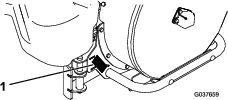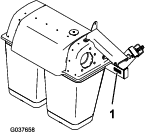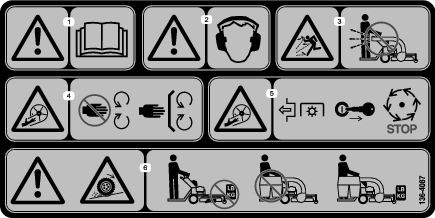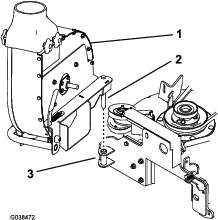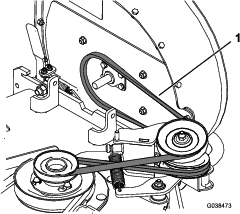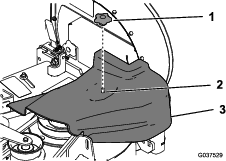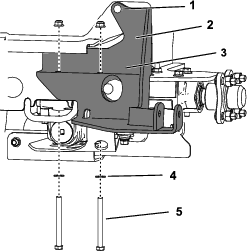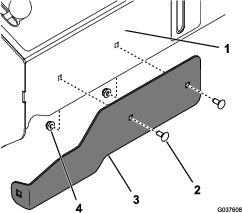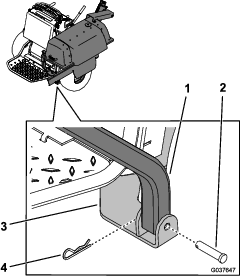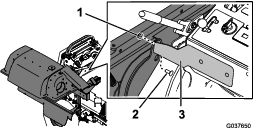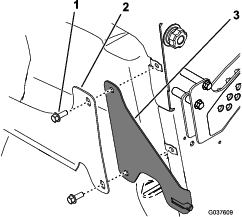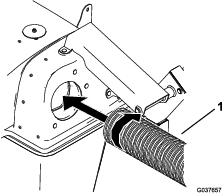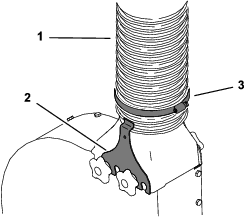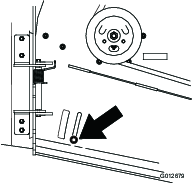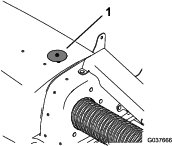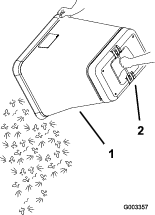Maintenance
Recommended Maintenance Schedule(s)
| Maintenance Service Interval | Maintenance Procedure |
|---|---|
| After the first 8 hours |
|
| After each use |
|
| Every 25 hours |
|
| Every 100 hours |
|
Cleaning the Bagger and Bags
| Maintenance Service Interval | Maintenance Procedure |
|---|---|
| After each use |
|
Note: If you do not clean the bagger, dried grass can accumulate and clog the blower housing and tube.
-
Wash the inside and outside of the bagger hood, bags, tube, fill-indicator impeller, and the underside of the machine. Use a mild automotive detergent to remove dirt.
-
Make sure that you remove matted grass from all parts.
-
After washing all parts, let them dry thoroughly.
Note: With all parts installed, start and run the machine for a minute to assist in drying.
Inspecting the Bagger Belt
| Maintenance Service Interval | Maintenance Procedure |
|---|---|
| After the first 8 hours |
|
| Every 25 hours |
|
Check belts for cracks, frayed edges, burn marks, or any other damage. Replace damaged belts.
Replacing the Bagger Belt
-
Disengage the PTO, move the motion-control levers to the NEUTRAL-LOCK position, and engage the parking brake.
-
Shut off the engine, remove the key, and wait for all moving parts to stop before leaving the operating position.
-
Lower the mower deck to the lowest setting.
-
Loosen the knob on the belt cover and remove the cover.
-
Open the blower assembly to access the belt and pulley.
-
Pull back on the spring-loaded idler pulley to relieve the belt tension (Figure 26).
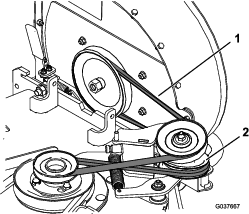
-
Remove the pulley from the blower assembly (Figure 27).
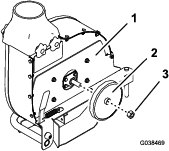
-
Remove the existing bagger belt from the deck and blower assembly.
-
Install the belt around the blower and idler pulleys as shown in Figure 26.
-
Install the pulley that you removed so that the belt is routed around it.
-
Close the blower assembly so that the handle latches.
Inspecting the Bagger
| Maintenance Service Interval | Maintenance Procedure |
|---|---|
| After the first 8 hours |
|
| Every 25 hours |
|
| Every 100 hours |
|
-
Disengage the PTO, move the motion-control levers to the NEUTRAL-LOCK position, and engage the parking brake.
-
Shut off the engine, remove the key, and wait for all moving parts to stop before leaving the operating position.
-
Check the upper tube, lower tube, bagger hood, and the blower assembly. Replace these parts if they are cracked or broken.
-
Check the bags, bagger frame, and screen. Replace any parts that are cracked or broken.
-
Tighten all nuts, bolts, and screws.
Inspecting the Mower Blades
-
Inspect the mower blades regularly and whenever a blade strikes a foreign object.
-
If blades are badly worn or damaged, install new blades. Refer to the Operator's Manual for the machine for complete blade maintenance.
Installing the Mower Blades
In most mowing conditions, the standard high-lift blades provide the best bagging performance.
Use a Toro Atomic blade for bagging leaves in dry conditions. In dry dusty conditions, the medium lift or low lift blades reduce dust and dirt blowout while providing effective bagging air flow.
Contact an Authorized Service Dealer for the proper blades for different mowing conditions.
Refer to the machine Operator's Manual for more information on installing blades.
